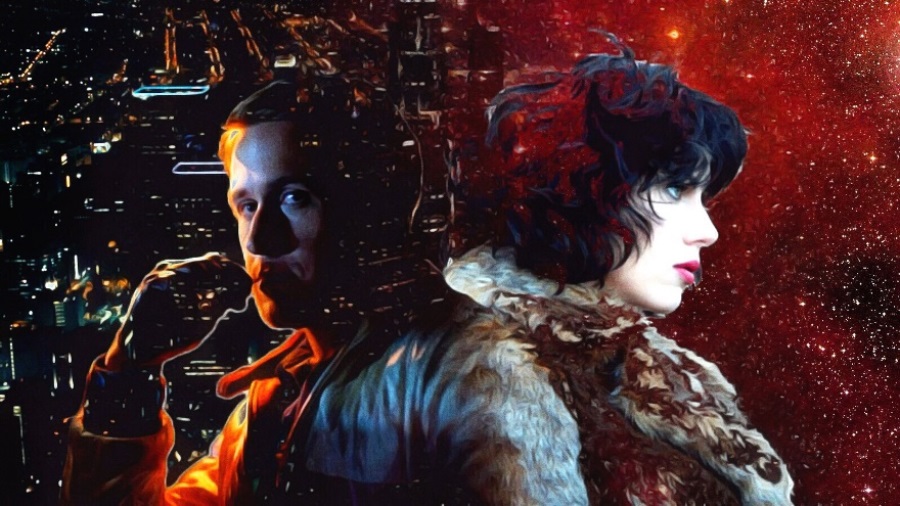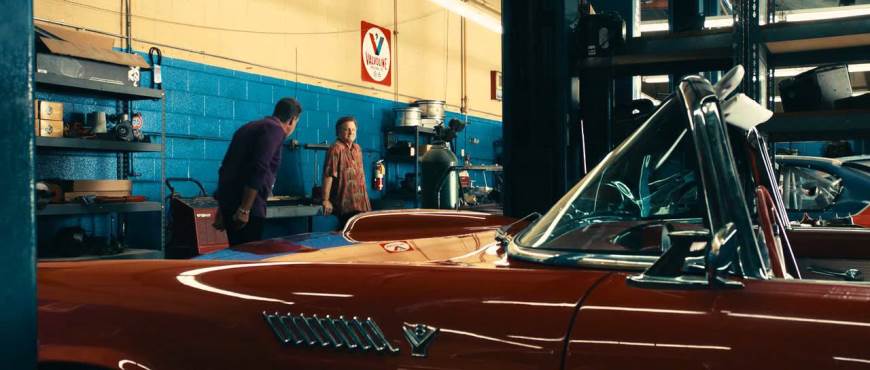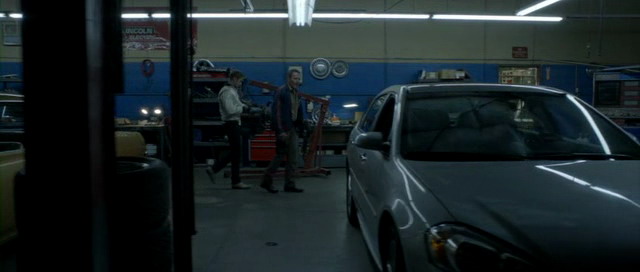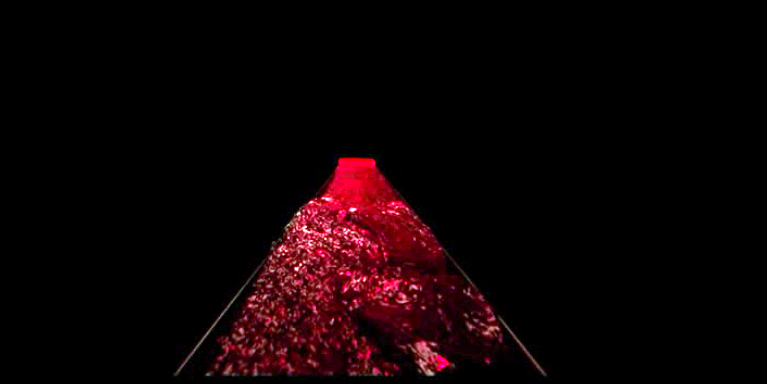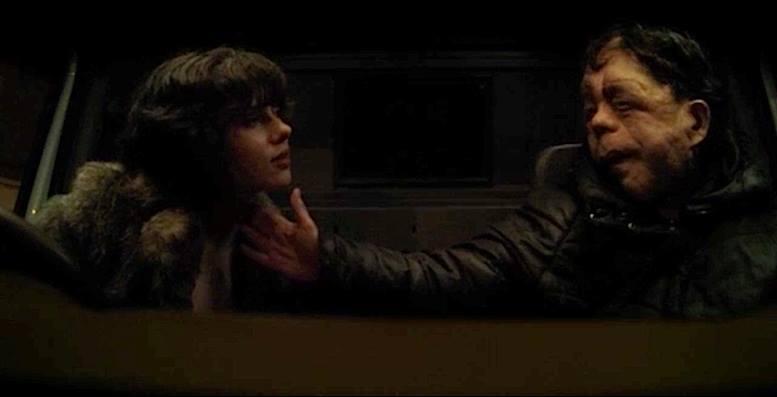Few films raised as many eyebrows in 2014 as Jonathan Glazer’s Under the Skin.
Totally uncommercial and unwilling to hold the audience’s hand, the bizarre sci-fi flick was declared a masterpiece by some and a load of boring, pretentious bullshit by others.
Under the Skin presents the type of cinematic experience some cinemagoers have not encountered since Nicolas Winding Refn’s Drive (2011), a film held in higher regard by the wider audience than Under the Skin.
Drive currently sits on an impressive IMDb rating of 7.8 (from 370k users), compared to Under the Skin’s mediocre rating of 6.3 (from 51.8k users). Curiously, on Metacritic both films received a score of 78 out of 100 based on the reviews of critics. Drive also scored 7.8 with the users, whereas Under The Skin could only muster a score 6.7 with the masses.
Drive was also the source of some controversy last year when it was re-scored by Zane Lowe, garnering strong criticism from fans like — “WTF! who do they think they are? Would you rewrite the theme to the Godfather? Wankers!” — despite Refn’s blessing.
So it’s quite clear Drive is bordering on a cult classic nearing mainstream acceptance, while Under the Skin is a highly divisive film. However, there are some strong similarities between the two movies.
This goes beyond the fact that both are an all-out assault on the senses, and rely heavily on sounds and visuals to tell their stories rather than snappy dialogue – though Drive does have some memorable lines.
Or that both films were originally intended to have far bigger budgets before becoming independent films.
They are, in some respects, two sides of the same coin, or two versions of one fantasy.
Neither Scarlett Johansson nor Ryan Gosling’s characters are named, nor do we know many details about their personality.
In Under the Skin, this is because we see Johansson’s Alien made human out of the nothingness, with no reason to exist beyond fulfilling her mission of luring men into her pool of black goo and turning them into meat balloons.
Gosling’s Driver has removed much to identify himself (besides his iconic ‘scorpion’ jacket, his only indulgence) in order to keep a low profile and out of the eyes of the law.
The Alien lacks character and struggles to answer, or avoids, even the most mundane of questions, while the Driver clearly has no interest in small talk. So really, they could be anyone – someone who is lonely, perhaps, or disconnected from the world, or feels powerless in their lives.
The Driver and the Alien both seek to stay in control early in the film (evident in the Alien’s case by her ‘interrogations’ of potential victims), and then lose it as they become more human.
Both characters, at least initially, seem to be ‘forces of nature,’ as Refn described the Driver in the commentary for Only God Forgives, and superhuman. Glazer also states that the Alien is ‘a force’ in the featurette included on the BluRay release.
Both films have a sense of dark fantasy and power about them, adding to the feeling that either could be a dream. Gosling himself believed that the Driver was:
“…a guy that’s seen too many movies, and he’s started to confuse his life for a film. He’s lost in the mythology of Hollywood and he’s become an amalgamation of all the characters that he admires.”
That certainly explains his strong, silent demeanour and compulsion to wear the jacket everywhere, despite not wishing to be seen or heard. Drive tends to lean towards being a male fantasy – the hardened exterior of the main character, his use of cars and control over machine, and desire to protect a woman and her child.
However as the film unfolds, we see that it’s not really the case – the fast cars are a tool for him, not a possession or status symbol, he doesn’t care about money and he’s quite vulnerable emotionally, if not physically.
His only friend, and link to humanity, is Bryan Cranston’s Shannon, who is hardly a saint and takes advantage of the Driver’s disinterest in material possessions.
Johansson’s Alien too has a companion, the Biker, though she is subservient to him, and there’s no emotional attachment – as neither possess the means to form one.
The Alien perhaps sees humans (and particularly young men) as being shallow, offering nothing more than meat to be harvested in the same manner many would view cattle – one victim ‘pops’ like a burst balloon after being drained of flesh.
Both movies represent loner fantasies, Drive as a dream and Under the Skin a nightmare, though clearly borne of similar people with the same negative opinion of most who occupy their worlds.
In the end the Driver lives while the Alien dies, however he’s now even more alone than he was at the start of the film. Furthermore, both movies suggest that emotions are what ultimately fuck it up for both protagonists. The Driver and the Alien are not human, attempt to become human, and fail spectacularly.
Gosling’s Driver, having found an honest person in a violent world, wants to be loved by her and it nearly costs him both of their lives. It also brings out the worst in him when he brutally murders the man in the elevator, then later Ron Perlman’s Nino (and his chauffer).
Meanwhile, the Alien seeks to understand the compassion prevalent in some of the creatures she has been harvesting, after getting a taste of it within herself – before ultimately being sexually assaulted and then killed by one of them.
The Alien is innately curious, indicated in her first appearance in human form when she examines an ant that she finds on the young woman’s body. Perhaps this is needed for her mission – in order to seduce humans, she needs the facility to develop an understanding of what we want and how we function.
It’s possible that Johansson’s Alien is not the only one harvesting men, given that she only has one biker assigned to her, and later in the film we discover there’s more of them.
So it could be that it’s a flaw common to the ‘seductress aliens’ – that little piece of humanity they need within them ultimately changes them and drives them to go rogue, seeking out what humanity has to offer besides meat. She becomes ‘infected’ by humanity, with the harrowing beach scene perhaps being the moment where it is revealed to her humans have something she lacks – compassion.
The message in both movies is seemingly that the protagonists each made the wrong decision in trying to engage with their latent humanity – it costs the Alien her life, while the Driver loses all connections to the world around him.
In the aforementioned beach scene, two people lose their lives trying in vain to save another, and an infant is left to fend for itself.
Based on his abandonment of Carey Mulligan’s Irene, the Driver seems to have decided that trying to be anything besides a force of nature, living outside wider society, is a mistake with fatal consequences.
The Alien, after making the harrowing discovery that she can’t consummate, also abandons her love interest, fleeing into the woods in search of an escape.
Trying to become more human sees both characters go from being powerful beings in control of their situations to being threatened and frightened.
The Driver lashes out with his back against the wall, while the Alien flees and becomes almost catatonic, lost in an unfamiliar and suddenly sinister place. Furthermore, while the Alien lacks compassion, she also doesn’t understand prejudice, which drives one of the men she picks up to shop at night, away from ignorant eyes.
Both films present a visualisation of the fear many of us have, especially if you see yourself as a ‘loner;’ in that if we open ourselves up to others we’ll be hurt, and we’ll potentially harm others through our mistakes.
Neither film leaves us with a particularly inspiring message; despite Drive’s popularity, these films are not designed to make you depart the cinema feeling better about life. They are instead examinations of the human experience through two characters that do not understand what it means to be human.
We are shown in these movies that while our humanity often will destroy us and be harmful to others, emotions are a key part of our existence and what make us human.
Drive and Under the Skin are brutally honest examinations of human nature through alien, or superhuman, eyes.
They are fearless and indeed beautiful; they also reflect sad realities for their fans and creators in another sense – this cinematic style typically doesn’t make you an overnight millionaire, hence why these experiences are so rare.
Shoot Farken wishes to thank Jeff Vatuvei @AardigOranje for the terrific feature illustration.

